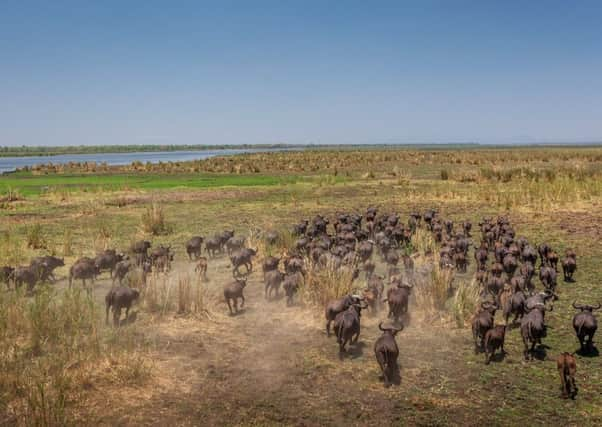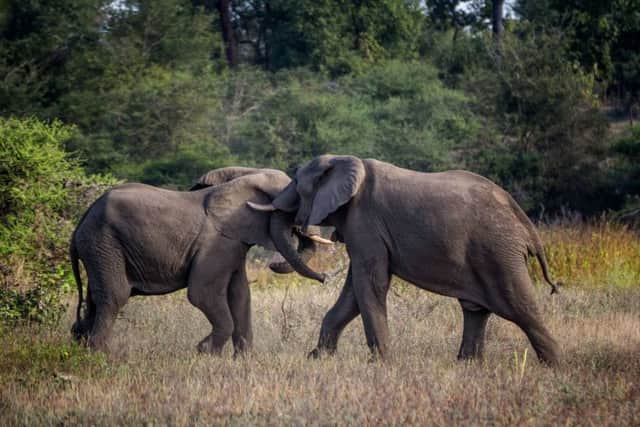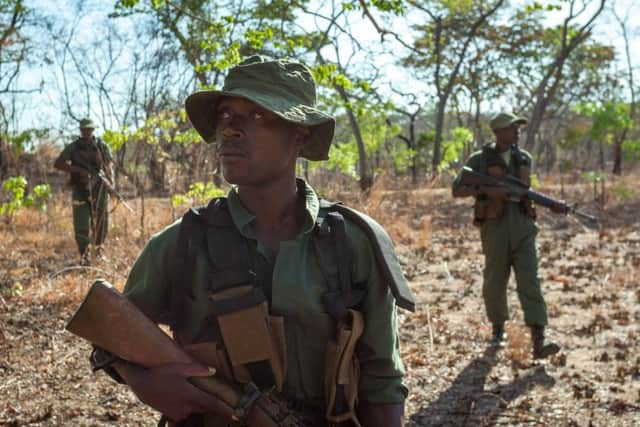Travel: Malawi, one of Africa's best safari destinations


THE trucks will start arriving for the elephants at Liwonde, in south Malawi, later this week. The day before they do, a helicopter will buzz above the Shire River that is the eastern boundary of the national park, marksman at the ready. He’ll probably first shoot the ones on the east side of the river, because they’ve been killing the locals. A month before I visited, three villagers were trampled to death.
Once anaesthetised by the marksman’s darts, the elephants will be loaded by crane on to lorries. They’ll awake to find themselves in crates, which will then be loaded on to low-bed trucks. And one of the biggest managed translocations of wildlife in history will be under way.
Advertisement
Hide AdThe elephants – 250 of them this month, then another 250 in a year’s time – have a 300-mile journey ahead of them. They’ll be travelling north, on surprisingly good roads, up a long sliver of a country whose south is wedged into Mozambique and whose north is squeezed between Zambia and Tanzania. They’ll be waved through half a dozen roadblocks where bored policemen go through the motions of looking for Malawian gold (as in cannabis: the country’s too poor to have much of the metallic variety), past bars with names like No More Thirsty and dress shops trading imaginatively as Hey! Look At Me or Mrs Stylish. They’ll pass a whole load of coffin-makers, although they won’t know what they are, any more than they will know what HIV is and why 11 per cent of humans in Malawi have it, including 70 per cent of the patients in the nation’s hospitals.


The 250 elephants will be heading north to a wildlife reserve called Nkhotakota, which is almost three times as big as the one they left behind at Liwonde. Through the slats on their crates, they’ll notice the way the land is changing, how the mountains of the Zomba plateau to the south are gradually flattening into the blue horizon, and the red-soil floodplains of the Shire river are being left behind.
Soon they’ll be passing the kind of places the Malawians themselves – or the relative few who can afford it – might want to come for a holiday. That flash of silver past the hotels on their right – that’s the lake the country is named after: Lake Nyasa in Scots-dominated colonial days when this was Nyasaland; Lake Malawi as it’s been since independence in 1964. Talking of which, Wednesday is Independence Day, so the humans might be out celebrating: it’s their last public holiday until Mother’s Day in October.
For the past year, up at Nkhotakota, they’ve been getting ready. The elephant sanctuary is going to be about the size of Aberdeen, and when the pachyderms have got used to it, they will be released into the rest of the national park, which is the size of Greater London (or, if you insist, 180,000 hectares). At the moment, in that entire area, there are only about 100 elephants. There used to be 1,500, but the national park was almost poached to death.
For the reason why that is unlikely to happen again, you have to head south again, and travel 400 miles across this poor but beautiful and friendly country to another Malawian wildlife reserve – and one that is changing the face of wildlife tourism in Africa.


At the turn of the century, Majete Wildlife Reserve was poached-out too. No-one had seen a lion since 1976, or a leopard since 1986, and its last elephant was killed in 1991. It had a staff of 10 poorly paid government employees, and just 15km of roads through a 700sq km reserve. In an area twice the size of Edinburgh there were only some 200 wild animals, with hyenas the biggest carnivores. Impressive it wasn’t.
Advertisement
Hide AdIn 2003, all this changed. A Dutch charity called African Parks took over administration of the wildlife reserve from the Malawian government. It confiscated some 400 guns (often home-made) and traps from poachers, built 350km of road, two tourist safari lodges, and erected 143km of electrified fencing around the whole lot. Then, having also started a whole range of outreach and education programmes, African Parks started hiring: these days it employs 129 full-time staff, including 40 who spend all day checking the perimeter fence.
The animals started arriving in 2003: 2,000 buffaloes, elands, sables, nyalas, waterbucks, impalas, warthogs, hartebeests and zebras in the first year, then 70 elephants came from Liwonde in 2006, black rhinos arrived the year after. Six leopards were flown in from South Africa, and in 2012, three lions followed. “We’ve now got four-and-a-half thousand animals all waiting to be eaten by ten lions and leopards,” our guide points out. The ecosystem is back in place, vultures now flying over land they’d forgotten about. The tourists are back too, drawn once more to the only national park in Malawi where they stand a chance of seeing the Big Five (lions, leopards, water buffaloes, rhinos and elephants). That – and the near-complete absence of poachers – makes Majete one of the continent’s great conservation success stories.
Advertisement
Hide AdWhat African Parks did in 13 years at Majete – the first wildlife reserve it took over – it hopes to do in less than five in the Miombo woodlands of Nkhotakota. At Liwonde, between the two, they’re introducing the same management plan to minimise poaching and human-elephant conflicts and boost wildlife tourism: secure fences, plenty of community initiatives, and a better paid and more highly motivated staff. In 20 years’ time, as Africa’s population soars (Malawi’s population of over 16 million is predicted to almost triple by 2050) and pressures grow on land use, only those wildlife reserves that are properly managed will survive – perhaps only about 60 bigger than 100,000 hectares in the whole continent. African Parks – which already has the continent’s largest anti-poaching force and manages more land than any other conservation organisation – could well be looking after a third of them.


Malawi isn’t the country that you first think of for safari holidays – but it may well be where their future lies. And those 250 elephants heading north from Liwonde this week are going to be part of it.
• Ethiopian Airlines flies from Heathrow to Blantyre via Addis Ababa from £603 return, inclusive or all taxes and bookable on www.ethiopianairlines.com, tel 0800 016 3449. In Malawi, David Robinson stayed at Huntingdon House (www.huntingdon-malawi-com) on the Satemwa tea estate; at Thawale Lodge on Majete Wildlife Reserve (www.african-parks.org/majete); Mvuu Lodge at Liwonde (www.cawsmw.com); Blue Zebra Island resort (www.bluezebra.mw) and Tongole Wilderness Lodge (www.tongole.com) in Nkhotakoka. Prices range from US$150 (Thwale) to $350 (Tongole) per night. Full details of each on www.malawitourism.com.